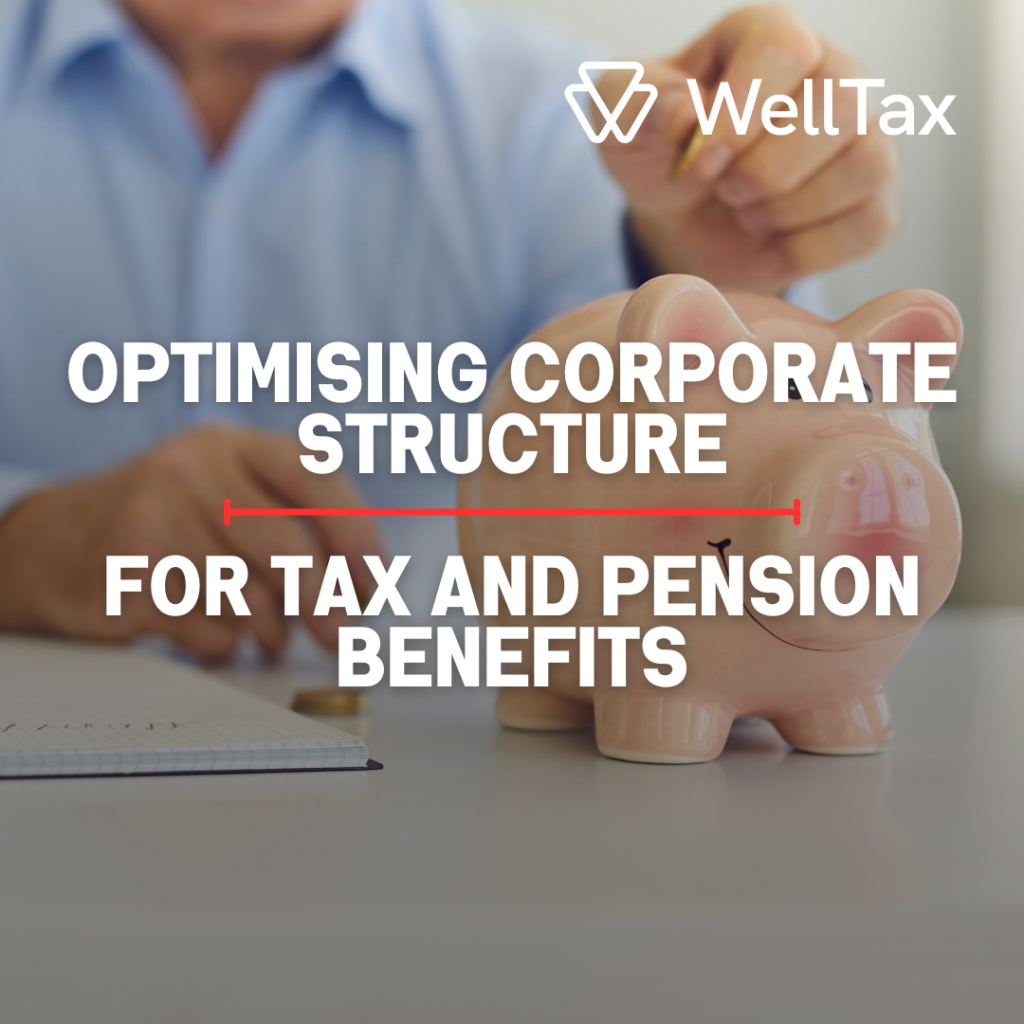Introduction
Managing corporate pension contributions strategically presents an opportunity not just to optimize corporate structure but also to leverage the maximum tax benefits provided by current legislation. This article will explore how properly planned pension contributions can positively affect corporate structure and maximize tax benefits for businesses and their employees.
The Crucial Link Between Pension Contributions and Corporate Structure
Intelligent management of corporate pension contributions can significantly impact corporate structure, making it an essential tool in tax optimization. A strategic approach to pension contributions can reduce the corporate tax burden and improve long-term financial sustainability for employees and family members involved in the business.
- Pension Contributions and Corporate Tax Relief: Corporate pension contributions must pass the stringent “wholly and exclusively” test for corporate tax relief eligibility, as outlined by s54 CTA 2009. This implies that contributions must be strictly for business purposes and considered a legitimate business expense.
- Impact on Family Members within the Corporate Structure: For family members employed by the business, it’s vital that their pension contributions are proportional to the value of their service. Maintaining the legitimacy of these contributions as business expenses is crucial to avoid scrutiny and maintain tax benefits. The idea is that if the pension contribution forms part of a remuneration package aimed solely at the business’s purposes, it is considered an allowable expense. This test scrutinizes the remuneration’s genuineness as a business expense, especially if it appears disproportionately high for the work performed on a commercial basis.
Navigating the Annual Allowance to Optimise Benefits
Managing the Annual Allowance is crucial for maximizing tax benefits related to pension contributions. It’s important for businesses and their employees to understand the rules governing the Annual Allowance to avoid penalties and optimize tax benefits.
- Differences Between Personal and Corporate Contributions: Unlike personal contributions, employer pension contributions are not bound by the individual’s Relevant Earnings and offer a unique opportunity to maximise tax benefits without impacting personal tax relief.
- Strategies for Maximising Use of the Annual Allowance: Utilising unutilised allowances from previous fiscal years can be an effective strategy for maximizing tax benefits. However, exceeding the Annual Allowance, currently £60,000 for the tax year 23/24, could trigger a tax charge. This allowance might be reduced for high earners with ‘threshold income’ over £200,000 and ‘adjusted income’ above £260,000. Unused allowances from the last three tax years can be carried forward, provided an active pension scheme existed during those years. This planning requires a strategic approach and a deep understanding of current tax rules.
Conclusion
Strategic planning of corporate pension contributions is essential for optimising corporate structure and maximising tax benefits. It is important for businesses to seek professional advice to navigate tax complexities and ensure that their corporate structure is optimised to take full advantage of available tax benefits.

